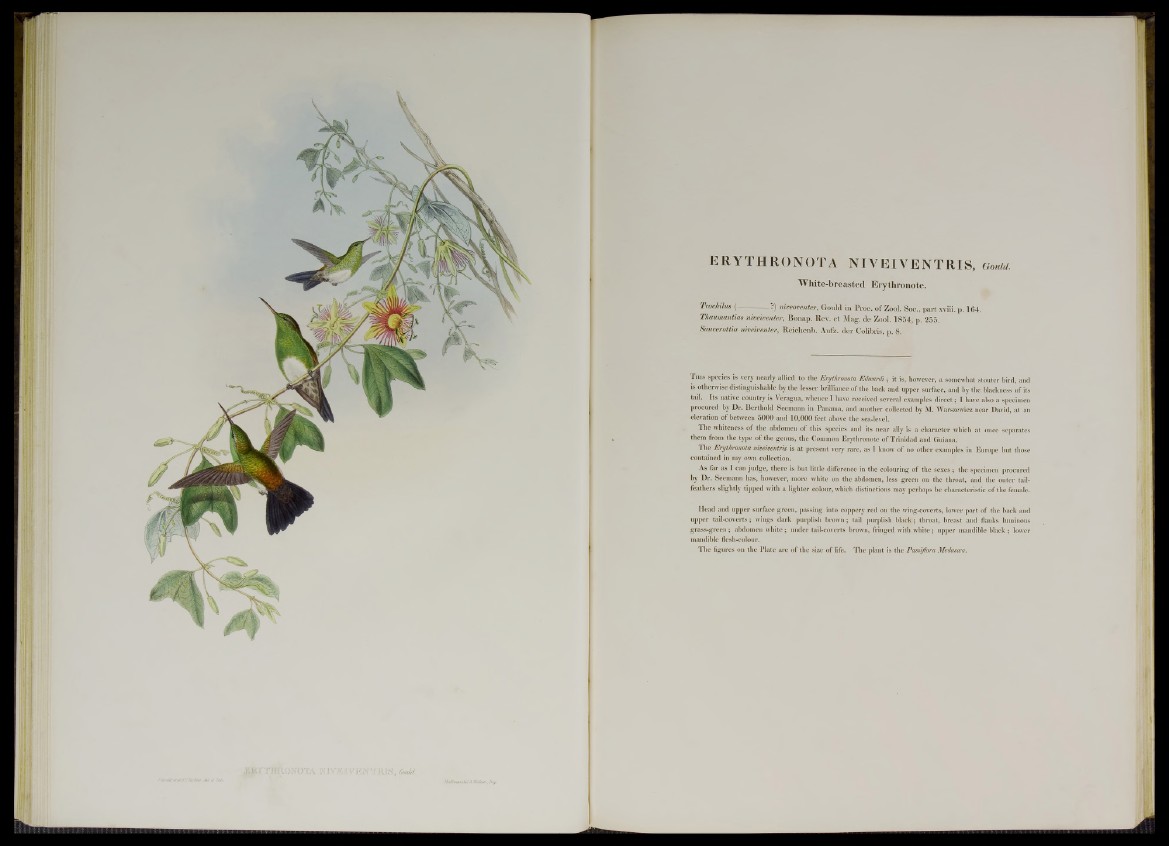
ERYTHRONOTA NIYEIYENTRIS, Gould.
White-breasted Erythronote.
Trochilus ( ------------- ?) niveoventer, Gould in Proc. o f Zool. Soc., p a rt xviii. p. 164.
Uiaumantias niveiventei-, Bonap. Rev. e t Mag. de Zool. 1854, p. 255.
Saucerottia niveiventei', Reichenb. Aufz. der Colibris, p. 8.
T h i s species is very nearly allied to the Erythronota Edwardi; it is, however, a somewhat stouter bird, and
is otherwise distinguishable by the lesser brilliance of the back aud upper surface, and by the blackness of its
tail. Its native country is Yeragua, whence I have received several examples direct; I have also a specimen
procured by Dr. Berthold Seemann in Panama, and another collected by M. Warszewicz near David, at an
elevation of between 5000 and 10,000 feet above the sea-level.
The whiteness of the abdomen of this species and its near ally is a character which at once separates
them from the type of the genus, the Common Erythronote of Trinidad and Guiana.
The E/rythronota niveiventris is at present very rare, as I know of no other examples in Europe but those
contained in my own collection.
As far as I can judge, there is but little difference in the colouring of the sexes ; the specimen procured
by Dr. Seemann has, however, more white on the abdomen, less green on the throat., and the outer tail-
feathers slightly tipped with a lighter colour, which distinctions may perhaps be characteristic of the female.
Head and upper surface green, passing into coppery red on the wing-coverts, lower part of the back and
upper tail-coverts; wings dark purplish brown ; tail purplish black; throat, breast and flanks luminous
grass-green; abdomen white ; under tail-coverts brown, fringed with white; upper mandible black ; lower
mandible flesh-colour.
The figures on the Plate are of the size of life. The plant is the Passiflora Meduscea.